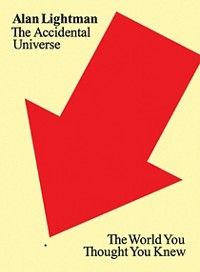Advertisement
Grab your lab coat. Let's get started
Welcome!
Welcome!
Create an account below to get 6 C&EN articles per month, receive newsletters and more - all free.
It seems this is your first time logging in online. Please enter the following information to continue.
As an ACS member you automatically get access to this site. All we need is few more details to create your reading experience.
Not you? Sign in with a different account.
Not you? Sign in with a different account.
ERROR 1
ERROR 1
ERROR 2
ERROR 2
ERROR 2
ERROR 2
ERROR 2
Password and Confirm password must match.
If you have an ACS member number, please enter it here so we can link this account to your membership. (optional)
ERROR 2
ACS values your privacy. By submitting your information, you are gaining access to C&EN and subscribing to our weekly newsletter. We use the information you provide to make your reading experience better, and we will never sell your data to third party members.
Biological Chemistry
Wally Gilbert
A biotechnology pioneer takes on the big picture
by By Rick Mullin
October 2, 2006
| A version of this story appeared in
Volume 84, Issue 40
"I have wandered through all the sciences at some level," says Walter (Wally) Gilbert, cofounder of Biogen. "My Ph.D. is in mathematics, and I began as a theoretical physicist at Harvard University. I then became a biologist without a license and won a Nobel Prize in Chemistry."
We are meeting at the Michelangelo Hotel on 51st Street in New York City to discuss art. Now retired from both Harvard and Biogen, Gilbert is a partner in BioVentures Investors, a venture capital firm that works in the biotech sector. He is also member of Viridian Artists, a cooperative in New York City's Chelsea art gallery district, where he is mounting the first New York exhibition of his photographs. The show runs through Oct. 14.
Gilbert shows me two catalogs of his work and hands me some of the invitation cards for his show. His dramatic-colored photographs of 100-year-old machine parts and industrial detritus, shot at close quarters, are not what one might expect from a biotechnology pioneer. But they are striking. Crackling with texture, they reveal the photographer's penchant for the red-orange color range. They are actually painterly. And they are large: Images exhibited at Viridian range up to 4 by 8 feet in size.






The title of Gilbert's exhibition, "The Norblin Project: Images of Decay," suggests one of the many seeming contradictions between the worlds of science and art inherent in his photography. A corecipient of the 1980 Nobel Prize in Chemistry for the development of a method to determine the sequence of nucleotide links in DNA and RNA, Gilbert has spent most of his professional life in a high-tech discipline. Some argue that biotechnology goes to unnatural lengths to ward off decay and decay's terminal end. Yet the photographs in "The Norblin Project," taken in 2006 at the long-dormant Norblin factory in Warsaw, Poland, are a celebration of rot, rust, and grease. They are an ode to clunky, outmoded machinery.
Scale represents another contradiction. The immense photographs seem very much at odds with Gilbert's other world of microscopic genes and proteins.
And given his background, the exhibit also raises questions about the modern conception of an incongruity between art and science. It is best summarized by Aldous Huxley, who declared that science doesn't recognize "the things that make life worth living," such as beauty and love, because science deals only with things that can be measured. Science, in short, does not go for the big emotional response.
But Gilbert, who has been using a camera and developing his own pictures ever since he was a child, is more attuned to congruities. "Over the years that I was active in science, I saw a great commonality in the creative impulse—in the artist's impulse and the scientist's—that overrides this issue of who's using numbers and who isn't," he says.
Gilbert admits, however, that the average visitor to the gallery might see things differently. "People think of the world of art as much more easily accessible than the world of science," he says. "People are scared off by the mathematical side of science. They are scared off by the fact there is a whole language that you must understand in order to talk about science."
Ironically, he says, this barrier is becoming a problem in art as well, noting the relatively recent evolution of a cabalistic language surrounding art appreciation.
But to Gilbert, the essence of both science and art is work. Once you get beyond the analysis and criticism and actually become involved in the practice, both disciplines become more accessible. "The artist is creating something that affects other people," he says. "It is a transmission to the senses. And there is a practical side of science—how you actually do things in the world."
Gilbert, who has traveled from mathematics to fine art photography via the sciences, is thinking these days about the purpose of his work as an artist. He defines it as the visual communication of emotion.
Really, he says, there is not much to talk about. "There is a sense in which the artist does something that lies on the other side of language," he says, showing me images of his photographs on a laptop. "To try to put it into words gets very tricky. If I did it with words, I'd be a poet."




Join the conversation
Contact the reporter
Submit a Letter to the Editor for publication
Engage with us on Twitter